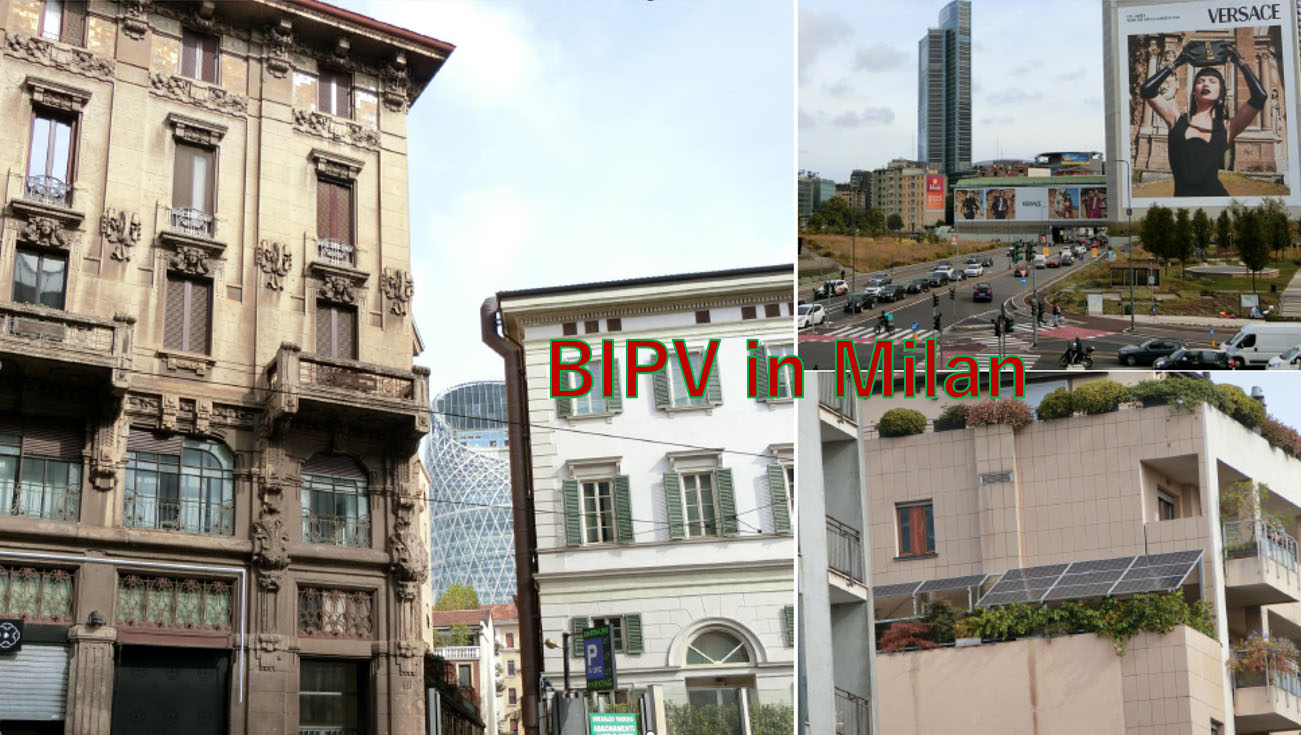Building-Integrated PV (BIPV) systems in Milan, Italy (Part 2) * (Seven BIPV systems located in the center of Milan)
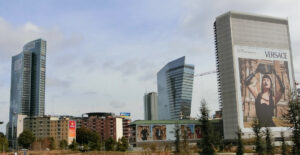
Seven BIPV systems are located in the center of Milan (within a 20-minute walking distance from Milano Porta Garibaldi railway station)
Short movie:
BIPV in Milan, Italy (Part 2): http://lumen5.com/user/info-5314/bipv-building-integ-33a08/
(Part 1): https://lumen5.com/user/info-5314/bipv-in-milan-part-i-aselg/
Gioia 22 Building
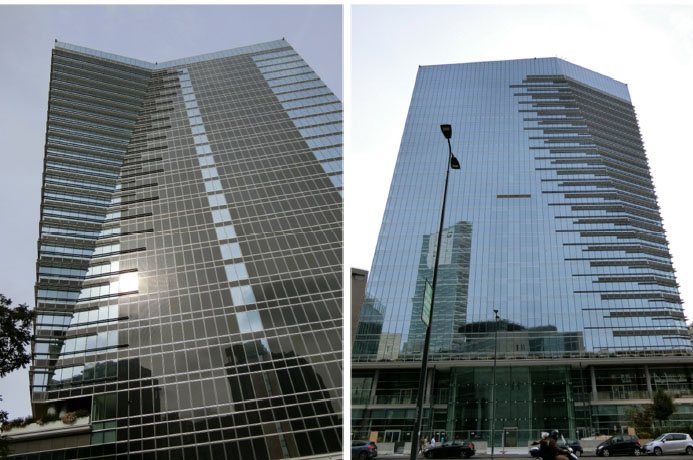
800-kW wall-integrated PV modules are installed on the wall and 200-kW PV modules are installed on the rooftop. The total output capacity is 1 MW. It is said to be the world’s largest example of BIPV installation on the wall. More than 65% of the electricity demand of the entire building is covered by PV electricity, realizing ZEB (Nearly ZEB). The construction was completed in 2022.
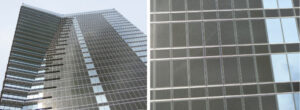
The black parts of the wall are PV (BIPV) modules, for which sc-Si solar cells are used.

The building is composed of flat surfaces but has a complex shape, and 44 types of PV modules with different shapes and sizes are used. 2,345 PV modules are used, covering an area of over 6,000 m2 with PV modules.
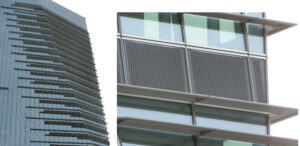
On the other side of the main wall, PV modules are also installed on the wainscot parts between the horizontal louvers. The PV modules are manufactured by Onyx Solar of Spain.
ZTE Building
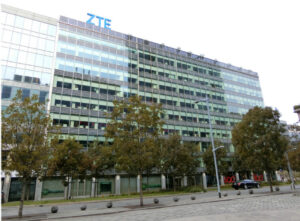
PV modules are installed on the wainscot part of the wall facing the main street and they are also installed as rooftop fenced. By having large spacing between solar cells, the building design emphasizes a lattice-like design.
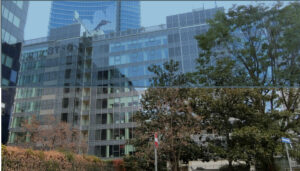
PV modules are also installed on the entire wall facing the back street.
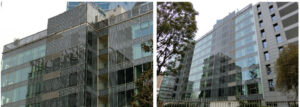
PV modules with uniformity of design are installed on wainscot parts of the wall and on the lighting parts of the elevator hall.
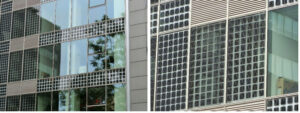
Sc-Si solar cells are used. The double-sided glass structure with large spacing between solar cells is adopted to make light-through PV modules.
Maire Tecnimont Building
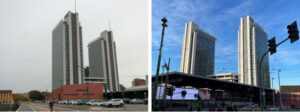

C-Si PV modules are installed. No PV modules are installed on the opposite wall of this building.
The concept of BIPV itself is not new. In Japan, research and development (R&D) of BIPV modules was conducted in the 1990s, and several BIPV buildings were constructed experimentally. However, it never became widespread or took root until today.
Although it is not mainstream in Europe and the United States, BIPV R&D and installation on actual buildings have continued uninterruptedly. Such BIPV buildings are not so rare anymore, especially in Europe. The trend was that there used to be a number of BIPVs that liked like solar cells or displayed solar cells as a design in the past. In recent years, products that are not recognizable as solar cells have been developed, commercialized, and installed. In addition to appearance, technological development and practical application are also underway in terms of systems such as multi-directional installation, partial shading, and improved safety.
As the number of suitable sites for MW-scale PV power plants is decreasing in Japan, it is necessary to promote the installation of PV systems in urban areas and on buildings in order to achieve decarbonization goals. Especially for architecture such as buildings, it is important to utilize not only rooftops but also walls. PV modules that can be integrated with buildings and cities are needed. China, which excels in mass production, has been leading the cost reduction of solar cells, and the global diffusion has expanded rapidly. On the other hand, the BIPV segment requires small-lot, high-variety, or one-ofa- kind products. Rather than pursuing cost reduction, it might be necessary to create high value-added BIPV systems that are suited to Japan’s climate, cities, buildings, and culture, and to lead to the development of PV and the revival of PV manufacturing in Japan.
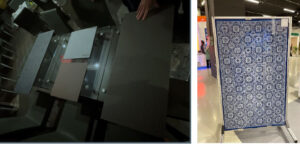
Left: Solar cells that do not look like solar cells (commercialized product) made by Sunage SA of Switzerland. Right: R&D product by SERIS of Singapore. PV module that minimizes the decrease in solar cell fill factor (FF value) caused by patterns.
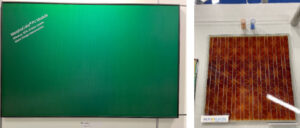
(Photographs: ©RTS Corporation)

